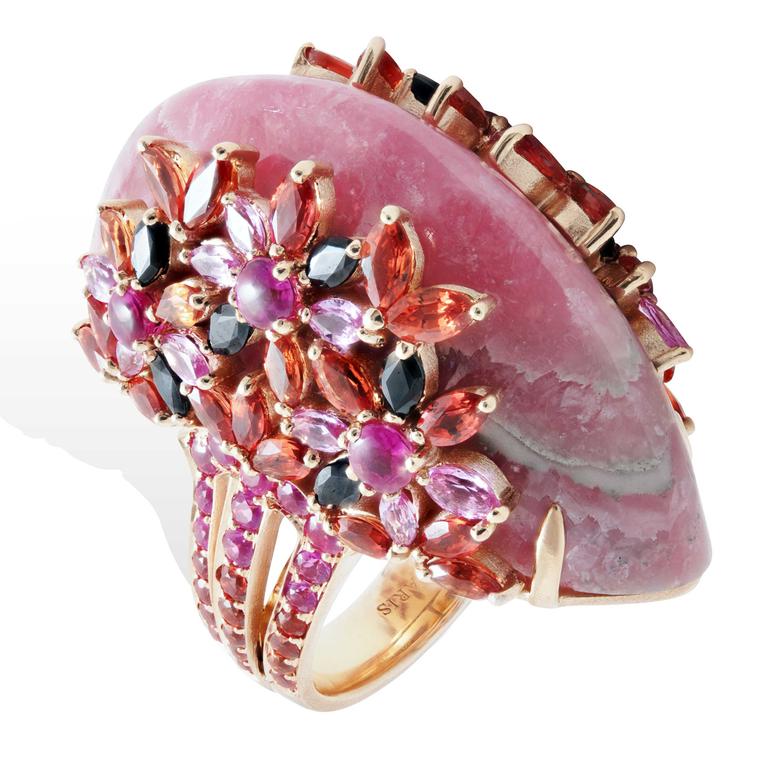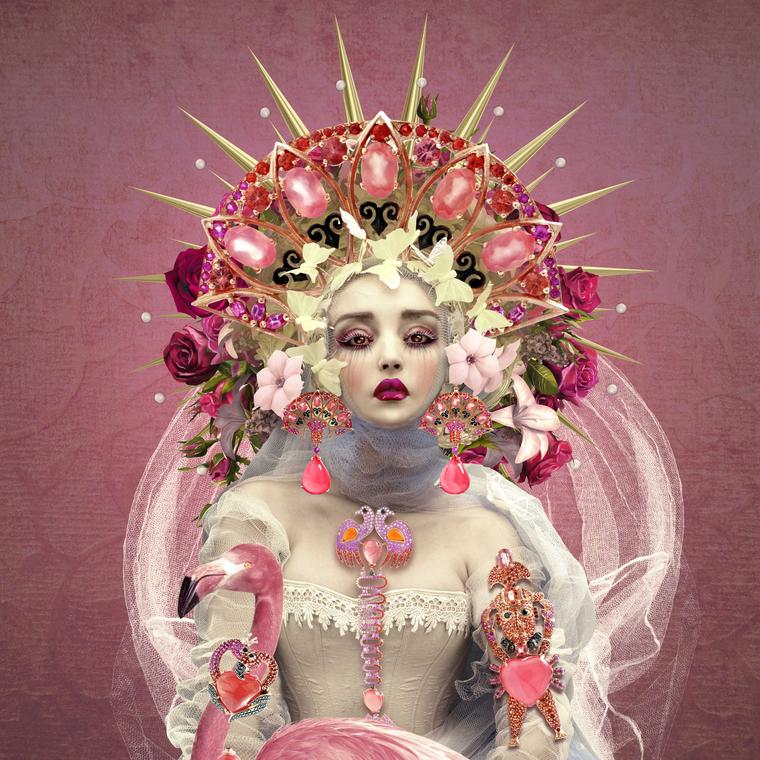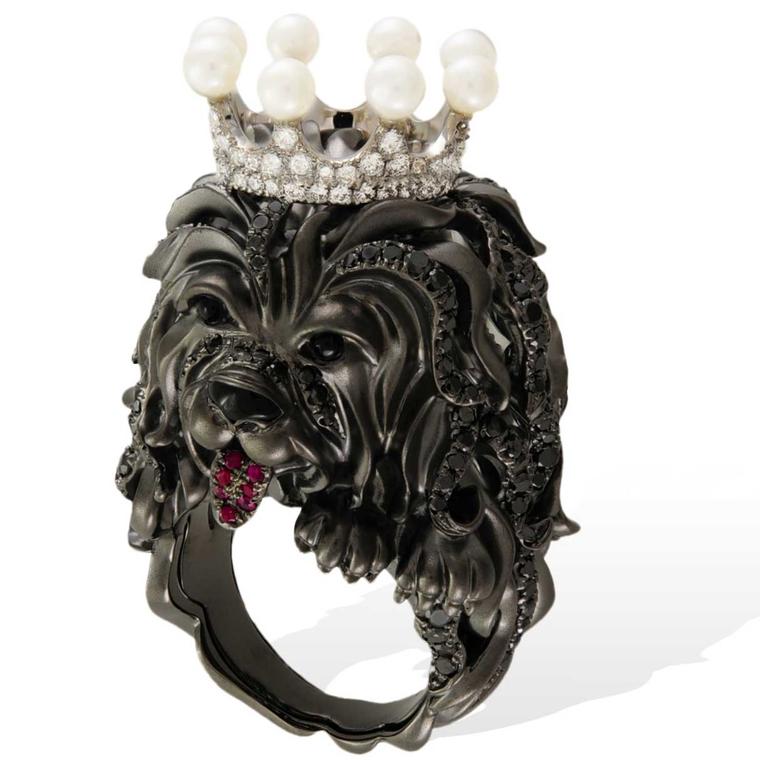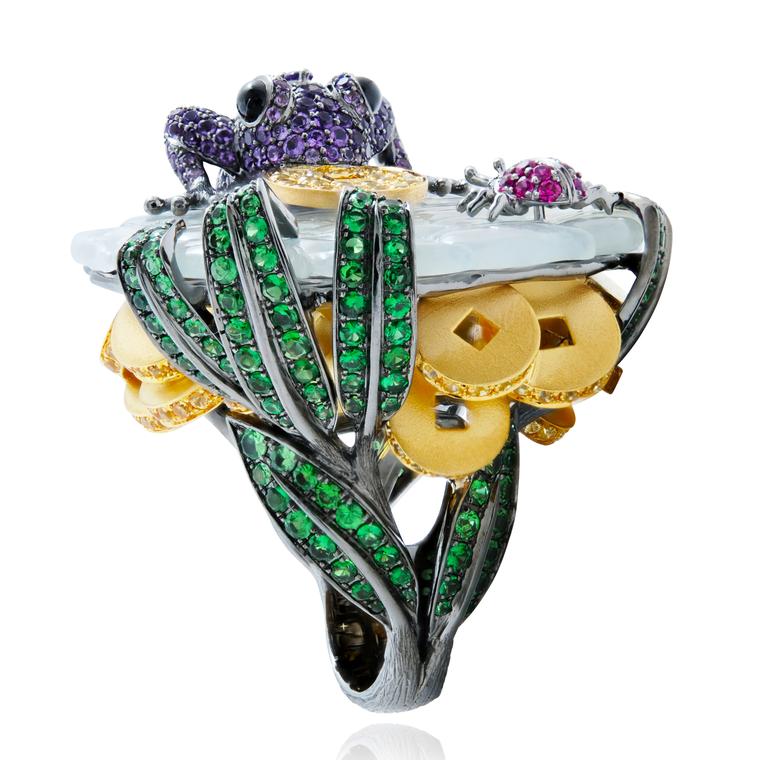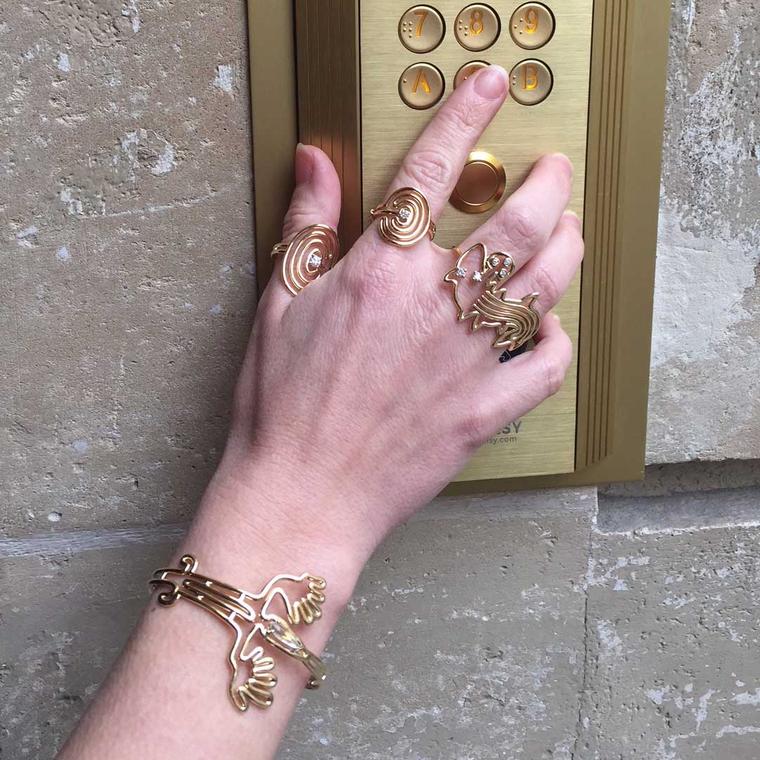
Populated by grinning crab gods, bejewelled mummies (below), sunset pink flamingos and worried emperors, Lydia Courteille’s Rosa del Inca collection was sparked by the Parisian jeweller's interest in the local as well as the colonial history that so fascinated her on journeys to South America.

Intrigued by the amount of rhodochrosite Ms Courteille saw in Argentina, she decided to use it in each of the 22 jewels that make up the Rosa del Inca collection and the soft pink colour of this stone unites the eclectic collection. Ms Courteille plays with both the ornamental stone variety (below) as well as gem-quality examples of the mineral. The jewels are made in pink gold and as well as the ubiquitous rhodochrosite, morganite, orange and pink sapphires, rubies and spinels add their colour to the collection.

Rosa del Inca is the Diaguita's people name for rhodochrosite (from rhodon and chros meaning red and colour in ancient greek). Argentine folklore recounts the story of two-star crossed lovers who following their death were turned to a blood red stone. A story like this was bound to captivate Ms Courteille, the ever-itinerant cultural magpie.
“Rhodochrosite is the national stone of Argentina,” explains Lydia at the launch of the collection in her rue St-Honoré boutique in Paris. “I saw it being sold everywhere and was curious to know more. But what they were selling was the ornamental quality of the mineral. By chance I had bought a stock of gem-quality rhodochrosite many years earlier in Asia so I decided to use both qualities of stones in a collection that mixes the indigenous cultures of the Andes with the later Spanish influence from colonial times.”
So far so good, but as cultural eclecticism is Lydia’s speciality, a sensible narrative soon becomes a surreal cocktail of culture, colour and history. All very much shaken not stirred and laced with a good measure of humour and sprinkled with a generous amount of beautiful gemstones.
“It’s what you see if you think of the Andes after smoking,” jokes Lydia looking at the wacky miniature Andean landscape she has recreated in her shop window. Some pieces are clear references to pre-colonial culture. The Mapuche civilisation, enslaved by the Spanish Conquistadores to work in the legendary silver mines where they refined their silversmithing skills, is remembered in the fine work in the long flamingo pendant. Like the Mapuche women’s large trapelacucha pectorals, Lydia's flamingo necklace is long and sits across the chest like a pectoral. Lydia uses four gem-quality rhodochrosites and 422 pink sapphires to create a pop art bright tribute to the indigenous jewellery tradition.
Viracocha, the Mapuche god of creation, lightening and storm is transformed into a hinged ring that runs the length of a digit. Wiggle your finger and his head and little crab claw-hands appear to dance above his plump rhodochrosite belly.
A ring of Atahualpa, the last Inca emperor, shows the leader with a concerned look on his face. Wearing a jaunty pair of pink earrings and matching ring, he gazes into his crystal ball to see what the future holds. Looking back at him is the stony, helmeted head of Pizarro the Spanish conqueror who didn't delay in executing him to send back to Charles I galleon-loads of Andean gold. Watch the video below to see the ring in its full three dimensional glory.
While mummified human offerings may not be an obvious inspiration for many, Lydia relishes the chance to render in lifelike details each rib, knuckle bone and rictus smile (top). Less ghoulish are the pretty fan-shaped earrings (below) reminiscent of the Spanish señoritas peineta or decorative combs used to hold their mantillas in place.
Star of the collection is the Three Ages of Man cuff bracelet. The theme of re-birth is present in many world cultures and Lydia adds this mélange of Aztec and Inca influences to her own quirky take on history. Carved in Ider Oberstein, Germany, home to some of the most skilled stone workers, the stern face of an Inca god stares out impassively. Activate the secret sliding mechanism and two sides of carved gold mask of an old man cover his face, which in turn are hidden by a pink sapphire countenance of a young man. A pink morganite crowns a regal headdress of pink sapphire baguettes that fan out like rays of the sun.
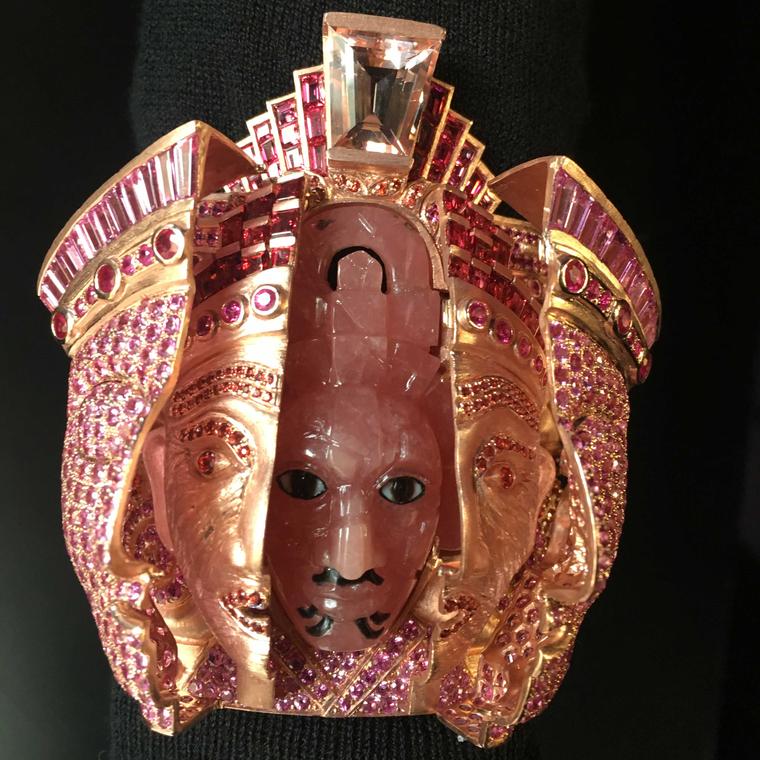
One of my favourite pieces – apart from the mummy brooch – is the large ring (below) featuring a pebble-sized rhodochrosite sliced in two. The rippling pink and white veins of the stone are framed by a pink sapphire rose, or Rosa del Inca if you like. As I held the ring to the light to admire the delicate rose hues of the stone, Lydia said: “ It looks like a slice of ham, right?” And that is Lydia for you: irreverent, direct and always original. And we wouldn’t have it any other way, though for the record I would describe the stone as more palatable strawberry and cream ripple.



